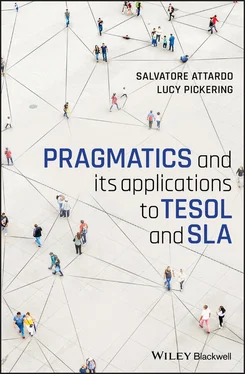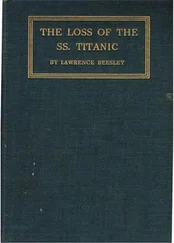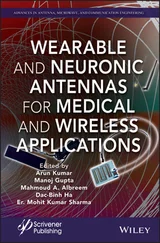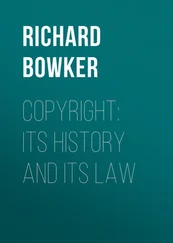17 9 Data Collection and Research Design in Studies of L2 Pragmatics9.1 Discourse Completion Tasks9.2 Interactional Studies9.2.1 Follow-up Interviews9.3 Pseudolongitudinal9.4 Longitudinal9.4.1 Study Abroad9.5 Computer Mediated Communication9.6 Action Research9.6.1 Student-Collected Research9.7 Conclusion
18 10 Metapragmatics10.1 Metalanguage and Object Language10.1.1 The Origins of the Language/Metalanguage Distinction10.1.2 Uses of Metalanguage in Linguistics10.1.3 Metadiscourse10.2 Deixis, Indexicality, and the Semiotic Turn in Sociolinguistics10.2.1 Deixis10.2.2 Indexicality10.2.3 The Semiotic Turn in Sociolinguistics10.3 Metalinguistic Awareness10.3.1 Implicit and Explicit Awareness10.4 Ideology, or the Lack of Awareness10.4.1 Definition of Ideology10.5 Conclusion
19 11 Frontier11.1 Pragmatic Resources in English as a Lingua Franca11.2 Multilingualism11.3 Embodied Cognition11.4 Complexity Theory11.4.1 Complex Systems11.4.2 Applications to Linguistics11.5 Cyberpragmatics11.6 Neuropragmatics11.6.1 Lateralization and Specialization11.6.2 The Theory of Mind11.6.3 Pragmatic Disorders11.7 Conclusion
20 Bibliography
21 Name Index
22 Subject Index
23 End User License Agreement
1 1.1 The grammar/pragmatics boundary, according to Ariel, 2008.
2 3.1 Speech acts and their formal representation, according to Searle (1969).
3 5.1 Cultural orientation toward negative or positive politeness.
4 6.1 The functions of language.
5 7.1 Classification of English modals; central modals are in order of frequency
6 7.2 Biber and Finegan’s (1989) four-way classification of stance.
1 1.1 Image of a cat.
2 1.2 A sign is the union of a signifier and a signified.
3 1.3 The indirect relationship between the sounds and the referent, mediated by the sign.
4 1.4 The Morse code.
5 1.5 Partition for the beginning of a Rachmaninoff piece with largo tempo.
6 1.6 The semantic Network of “chair.” “isa” labels hyponymy links.
7 1.7 The Müller-Lyer figures.
8 5.1 FTA strategies; adapted from Brown and Levinson (1987, p. 69).
9 5.2 Degrees of (im)politeness and types of polite/politic behavior.
10 5.3 Thanking gesture in Indian culture.
11 5.4 Thanking gestures in other cultures.
12 6.1 Jakobson’s Model.
13 6.2 A paratone, displaying the typical declination (solid line) and resets (dashed lines).
14 6.3 The “schools” of functionalism.
15 7.1 The deictic Space.
16 7.2 Thestance triangle (adapted from Du Bois, 2007).
17 7.3 Instances of well in COCA.
18 8.1 The evolution of the communicative competence model (Adapted from Celce-Murcia et al., 1995).
19 9.1 Recording of an ITA teaching in a chemistry laboratory, using a headset.
20 9.2 A screenshot from CARLA.
21 10.1 No parking sign in China.
22 10.2 Directional arrow Signs.
23 10.3 The Eiffel tower. Photograph.
24 10.4 The Eiffel tower. Drawing.
25 11.1 The hierarchy of world languages; adapted from de Swaan (2001) and Cook (2013, p. 190).
26 11.2 Broca’s and Wernicke’s areas.
27 11.3 Brain activity patterns in bilinguals (from Perani & Abutalebi, 2005, p. 203.).
1 Cover
2 Title page Pragmatics and its applications to TESOL and SLA Salvatore Attardo and Lucy Pickering
3 Copyright
4 Table of Contents
5 Chapter
1 i
2 ii
3 iii
4 iv
5 v
6 vi
7 vii
8 viii
9 ix
10 x
11 xi
12 xii
13 xiii
14 xiv
15 xv
16 xvi
17 xvii
18 1
19 2
20 3
21 4
22 5
23 6
24 7
25 8
26 9
27 10
28 11
29 12
30 12
31 14
32 15
33 16
34 17
35 18
36 19
37 20
38 21
39 22
40 23
41 24
42 25
43 26
44 27
45 28
46 29
47 30
48 31
49 32
50 33
51 34
52 35
53 36
54 37
55 38
56 39
57 42
58 43
59 44
60 45
61 46
62 47
63 48
64 49
65 50
66 51
67 52
68 53
69 54
70 55
71 56
72 57
73 58
74 59
75 60
76 61
77 62
78 63
79 65
80 66
81 67
82 68
83 69
84 70
85 71
86 72
87 73
88 74
89 75
90 76
91 77
92 78
93 79
94 80
95 81
96 82
97 83
98 84
99 85
100 86
101 90
102 91
103 92
104 93
105 94
106 95
107 96
108 97
109 98
110 99
111 100
112 102
113 103
114 106
115 107
116 108
117 111
118 112
119 114
120 115
121 116
122 117
123 118
124 119
125 120
126 121
127 122
128 123
129 124
130 126
131 127
132 128
133 129
134 130
135 131
136 132
137 133
138 134
139 135
140 136
141 137
142 138
143 139
144 140
145 141
146 142
147 143
148 144
149 145
150 146
151 147
152 148
153 149
154 150
155 151
156 152
157 154
158 157
159 158
160 159
161 160
162 161
163 162
164 163
165 164
166 165
167 166
168 167
169 169
170 170
171 171
172 172
173 173
174 174
175 175
176 176
177 177
178 178
179 179
180 182
181 183
182 184
183 185
184 186
185 187
186 188
187 189
188 190
189 191
190 192
191 193
192 194
193 195
194 196
195 197
196 198
197 199
198 200
199 201
200 202
201 203
202 204
203 205
204 206
205 207
206 208
207 209
208 210
209 211
210 212
211 213
212 214
213 215
214 216
215 217
216 218
217 219
218 220
219 221
220 222
221 223
222 224
223 225
224 226
225 227
226 228
227 229
228 230
229 231
230 232
231 233
232 234
233 235
234 236
235 237
236 238
237 239
238 240
239 241
240 242
241 243
1.1 The grammar/pragmatics boundary, according to Ariel, 2008.
3.1 Speech acts and their formal representation, according to Searle (1969).
5.1 Cultural orientation toward negative or positive politeness.
6.1 The functions of language.
7.1 Classification of English modals; central modals are in order of frequency
7.2 Biber and Finegan’s (1989) four-way classification of stance.
1.1 Image of a cat.
1.2 A sign is the union of a signifier and a signified.
1.3 The indirect relationship between the sounds and the referent, mediated by the sign.
1.4 The Morse code.
1.5 Partition for the beginning of a Rachmaninoff piece with largo tempo.
1.6 The semantic Network of “chair.” “isa” labels hyponymy links.
1.7 The Müller-Lyer figures.
5.1 FTA strategies; adapted from Brown and Levinson (1987, p. 69).
5.2 Degrees of (im)politeness and types of polite/politic behavior.
5.3 Thanking gesture in Indian culture.
5.4 Thanking gestures in other cultures.
Читать дальше












